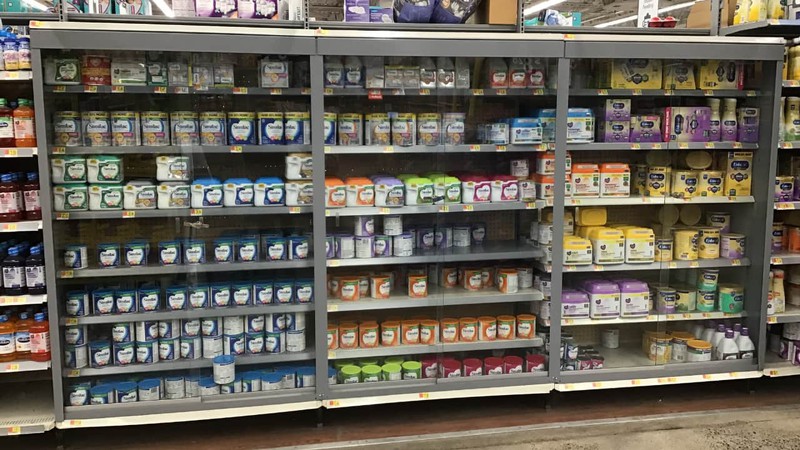Californians are fed up with flash-mob shoplifting, smash-and-grab theft, and an alarming uptick in Fentanyl deaths.

You know it's bad when they need to lock up the baby formula. Mike Mozart/Flickr CC BY 2.0
Updated Dec. 29, 2024: Prop. 36, which increases sentences for certain retail theft and drug crimes, took effect on Dec. 18. Over the past week, law enforcement officials statewide have begun jailing repeat offenders and preparing to enact "forced tratment" policies.
How It Started
In 2011, the US Supreme Court found that California was failing to provide individuals incarcerated in its prisons with a minimum standard of health care due to overcrowding. The Court found that the state’s prison populations were 180 percent above design capacity and ordered them to not go above 137.5 percent of capacity. California had no choice but to release prisoners to meet its obligations under the order.
This led to California Assembly Bills 109 and 117, both of which were signed into law in 2011, allowing the state to house those convicted of non-violent, non-sexual and non-serious crimes, and sentenced to more than one year in county jails.
The legislation included funding, and led to an increase in diversion programs, as well as a building boom as county jails had to increase capacity for this “realignment” of jailing nonviolent offenders in their home counties.
As a continuing part of this effort, California voters passed Proposition 47 in 2014, which changed the charging categories for a variety of nonviolent theft and drug offenses, reducing them from felonies to misdemeanors. The intent was to use the savings from not incarcerating those offenses into drug treatment and other alternatives.
How It’s Going
Pushback on realignment began shortly after the passage of Prop 47, as an uptick in crime began affecting communities. While critics were quick to point to the proposition, and the early release of inmates from the state correctional system, the data was not so clear and the issue more complex on the ground.
Which brings us to the current moment. Citizens and business owners facing increasing incidents of smash-and-grabs and retail theft, and witnessing the sharp increase of Fentanyl and other opioid-related drug deaths, brought steadily mounting pressure. A group called Californians For Safe Communities collected 900,000 signatures to put Proposition 36 on the ballot for the November 5 2024 election.
And after a competing Democrat-authored initiative was yoinked at the last minute by Governor Newsom, Democratic legislators instead focused on passage of an anti-crime package of legislation including Assembly Bill 2943 (Shoplifting) and Assembly Bill 1779 (Jurisdiction) which were signed into law on August 16 2024.
Proposition 36 and Assembly Bills 2943 & 1779 roll back or modify the Proposition 47 classification of retail theft of below $950 in value as a misdemeanor, elevating the crime to a felony through different formulations. Prop 36 targets repeat offenders specifically, while AB 2943 & 1779 aggregate the value of stolen goods in separate thefts in multiple jurisdictions to count against the $950. Proposition 36 also takes a harder line on Fentanyl dealers.
Propostition 36 Passed in a Landslide. Now What?
Given the mood of the electorate, it was no surprise that Proposition 36 passed by a wide margin of 68.42% to 38.53% in the November 2024 election and went into effect on December 18.
Local prosecutors were quick to begin charging suspects under the new laws. Meanwhile, California Governor Newsom continued to express opposition to Proposition 36 in a December 27 press conference, touting success of a recent California Highway Patrol organized retail theft bust of 117 suspects.
It's still too early to assess the impact of these recent anti-crime measures, or when retailers will release tooth brushes and toothpaste from locked display cases.
Short articles summarizing reporting by local news sources with linkbacks to the original content.